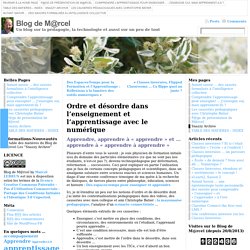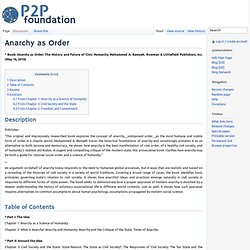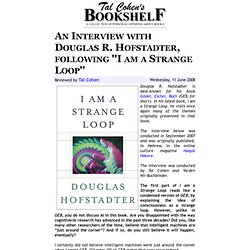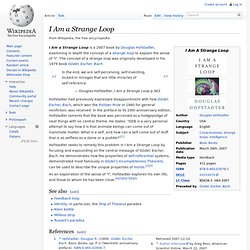

ALIA 3 Chaordic Path. Ordre et désordre dans l'enseignement et l'apprentissage avec le numérique. Apprendre, apprendre à « apprendre » et … apprendre à « apprendre à apprendre » Plusieurs d’entre vous le savent : je suis physicien de formation initiale issu du domaine des particules élémentaires (ce que ne sont pas nos étudiants, n’est-ce pas ?)

, devenu technopédagogue par déformation, réformation … successives. Ceci peut expliquer en partie l’utilisation que je fais de certains concepts pédagogiques et scientifiques, dans un amalgame salutaire entre sciences exactes et sciences humaines. Un diapo d’une récente conférence témoigne de ma quête à la recherche de dialogues, de tierces places entre philosophie, éducation, sciences et histoire : Des espaces-temps pour enseigner et apprendre Ici, je m’étendrai un peu sur les notions d’ordre et de désordre dont j’ai initié les contextualisations pédagogiques dans des vidéos, des causeries avec mon collègue et ami Christophe Batier : la mayonnaise pédagogique, l’analyse d’un scénario connectiviste … – Thot Cursus … A. 1. 2. 3. B. Anarchy as Order. * Book: Anarchy as Order: The History and Future of Civic Humanity.

Faut-il créer un poste de Chief Chaos Officer. Depuis le 17 décembre 2010 à Casablanca, mes conférences sont maintenant centrées sur le management paradoxal (la lecture de mon billet sur le sujet est un pré-requis à celui-ci sinon vous risquez d’être perdu !).

Il me semble aujourd’hui pertinent de créer une fonction spéciale dans l’entreprise : une sorte de “gardien de l’important” (gardien de la logique Chaos) – La logique Ordre étant centrée sur l’urgent. Chaordic Commons - Home Page. Du Chaos-Désordre au Chaos-Agile. Le mot “Chaos” que j’utilise dans la présentation du management paradoxal (considérer la lecture de ce billet comme un pré-requis avant de lire celui-ci) suscite beaucoup de réactions !

Il est perçu négativement par certaines personnes et pour d’autres personnes, il crée le sentiment positif de pouvoir aller de l’avant. Pris entre ceux qui veulent que je change le mot “Chaos” par autre chose et ceux qui ne veulent pas, ceux qui insistent et ceux qui changent d’avis, j’étais perdu. Alors, j’ai décidé de créer deux nouveaux mots en espérant que tout le monde trouve son compte ! Mais, je suis conscient que ça pourrait aussi aggraver les choses.
Japanese Folktales. Selected and edited by D.

L. Ashliman © 1998-2008 Contents Return to D. The Two Frogs Once upon a time in the country of Japan there lived two frogs, one of whom made his home in a ditch near the town of Osaka, on the sea coast, while the other dwelt in a clear little stream which ran through the city of Kyoto. So one fine morning in the spring they both set out along the road that led from Kyoto to Osaka, one from one end and the other from the other. They looked at each other for a moment without speaking, and then fell into conversation, explaining the cause of their meeting so far from their homes. "What a pity we are not bigger," said the Osaka frog; "for then we could see both towns from here, and tell if it is worth our while going on.
" "Oh, that is easily managed," returned the Kyoto frog. This idea pleased the Osaka frog so much that he at once jumped up and put his front paws on the shoulder of his friend, who had risen also. "Dear me! " The Stonecutter. The Stonecutter is a Chinese folk-tale of unknown authorship.

It is closely related to the themes of The Fisherman and His Wife, a well known fairy tale collected by the Brothers Grimm. In the legend, a poor stonecutter takes notice of the lifestyles of those from higher in the social hierarchy and wishes to become them. Despite having his wishes granted, the stonecutter is still unsatisfied and later desires to become more powerful by embodying forces within nature. Eventually, after a chain of events, he ultimately realizes satisfaction with his place in society and nature as a lowly stonecutter.
Origins[edit] The exact author of The Stonecutter is unknown but the tale was already widespread in China and Japan before it was first translated by David Brauns in Japanische Märchen und Sagen (1885). Analysis[edit] According to the Aarne-Thompson classification system of fairy tales, The Stonecutter is a tale of type 555, folktales about dissatisfaction and greed. See also[edit] Do loops explain consciousness ? THE MIRRORING MIND - by @JasonSilva. An Interview with Douglas R. Hofstadter, following ''I am a Strange Loop'' Douglas R.

Hofstadter is best-known for his book Gödel, Escher, Bach (GEB for short). In his latest book, I am a Strange Loop, he visits once again many of the themes originally presented in that book. The interview below was conducted in September 2007 and was originally published, in Hebrew, in the online culture magazine Haayal Hakore. The interview was conducted by Tal Cohen and Yarden Nir-Buchbinder. The first part of I am a Strange Loop reads like a condensed version of GEB, by explaining the idea of consciousness as a strange loop.
I certainly did not believe intelligent machines were just around the corner when I wrote GEB. Am I disappointed by the amount of progress in cognitive science and AI in the past 30 years or so? I am a deep admirer of humanity at its finest and deepest and most powerful — of great people such as Helen Keller, Albert Einstein, Ella Fitzgerald, Albert Schweitzer, Frederic Chopin, Raoul Wallenberg, Fats Waller, and on and on. We'll return to Kurzweil soon. I Am a Strange Loop - i.am.a.strange.loop.pdf. Strange loop. I Am a Strange Loop. I Am a Strange Loop is a 2007 book by Douglas Hofstadter, examining in depth the concept of a strange loop to explain the sense of "I".

The concept of a strange loop was originally developed in his 1979 book Gödel, Escher, Bach. Hofstadter had previously expressed disappointment with how Gödel, Escher, Bach, which won the Pulitzer Prize in 1980 for general nonfiction, was received. In the preface to its 20th-anniversary edition, Hofstadter laments that the book was perceived as a hodgepodge of neat things with no central theme. He states: "GEB is a very personal attempt to say how it is that animate beings can come out of inanimate matter. What is a self, and how can a self come out of stuff that is as selfless as a stone or a puddle? " Hofstadter seeks to remedy this problem in I Am a Strange Loop by focusing and expounding on the central message of Gödel, Escher, Bach. See also[edit] References[edit] Jump up ^ Hofstadter, Douglas R. (1999).